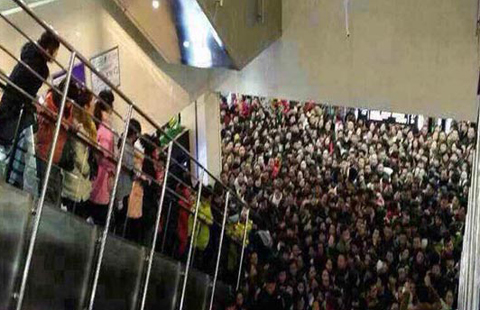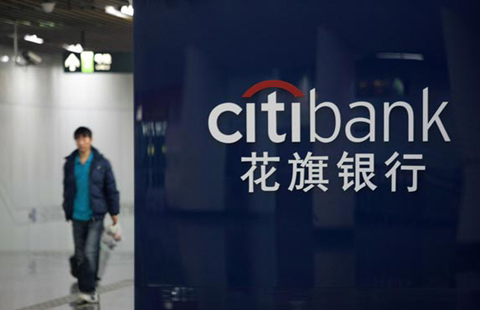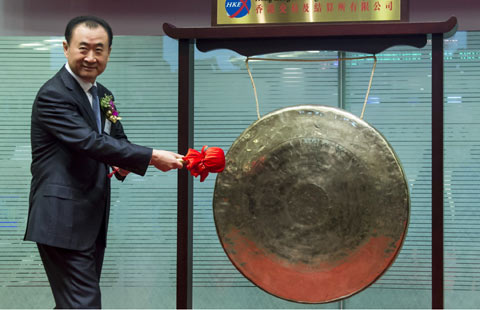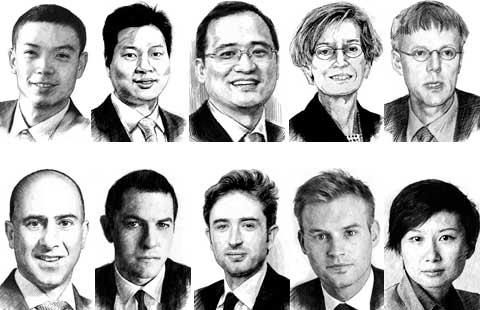Liquidity vital to cementing stocks outlook
By XIE YU (China Daily) Updated: 2015-01-06 09:04Some forecast gains of more than 20% next year helped by reforms that should make SOEs more profitable
The year-end stock market rally has sucked in billions of yuan of new money from hundreds of thousands of investors, ending a slump of many years. Many investors are now taking stock of their gains while wondering what to expect in 2015 and what to watch to determine the market's direction.
The answer is simple: liquidity. As any analyst knows, liquidity on the Chinese mainland is determined by the central bank. Any investor who tries to ignore that reality should put their money elsewhere.
Liquidity has always been a driving force in the mainland market, but its role has become critical as the economy shifts to a "new normal" marked by slower growth and structural reform. While reform is necessary, it creates many uncertainties.
Optimism ticked up at mid-year on talk that the government would ease monetary policy to boost economic growth. After a few tweaks to credit conditions, the People's Bank of China on Nov 21 announced the first interest rate cuts in two years.
The A-share market, having been the world's worst performer for three years, got a jolt.
It moved to the forefront of the world's best-performing markets, with the benchmark Shanghai Composite Index soaring 53 percent in the past year, and many investors believe the momentum will go on in year 2015.
Most of those gains were achieved in just 30 trading days. In the 10 trading days after the rate cuts, the market rose 20 percent.
The market's capitalization has overtaken that of Japan to become the world's second-largest after the United States.
Many analysts said the rally was directly triggered by the rate cuts. Investors are now betting on further monetary easing and other liquidity-boosting factors.
The new Shanghai-Hong Kong Stock Connect, which allows overseas investors to trade China's A shares directly, may bring in sustainable new liquidity. And the cooling property market and the drying up of shadow bank investment products have pushed people to look for other options, mostly stocks.
Investors are more confident that the economy has stabilized and will post steady growth in the coming years.
"Structural reforms should continue to improve China's growth quality and sustainability. China's economic growth will likely stabilize above 7 percent as structural problems are corrected," said domestic investment bank China International Capital Corp in a report.
CICC expects the market to rise 20 percent in 2015, supported by lower interest rates, improving liquidity and reforms that should make State-owned enterprises more profitable
Guotai Junan Securities Co has forecast gains of 30 percent this year as reform in the financial system, land use and resource prices will improve economy efficiency.
"Some people said the economy in China is weak and we have done nothing solid in the past year. Is that really the situation?" said Liang Hong, chief economist at CICC.
About 70 percent of 300-plus reforms proposed during the Third Plenum of the 18th Communist Party of China Central Committee have been initiated. Some have already shown results, CICC said.
Liang said she believes that GDP growth in 2015 will ease to 7.3 percent, but it will rebound to 7.5 percent in 2016.
The PBOC said in a recent working paper that GDP growth for 2015 may be 7.1 percent, which is lower than the forecasts of most investment banks. The central bank also said that downward pressure will mainly come from the property industry, while exports will hold up with improving external environment, and retail sales will be strong based on a low inflation rate of 2.2 percent.
Over the past 10 years, price-earnings ratios in China have fallen from 15 to 20 to only 8 to 12. This change reflects slower economic growth and the shift to a new growth model, Barclays Plc said in its 2015 equity outlook.
- China approves new IPOs
- Made in China at Hanoi's oldest market
- Fuzhou growers turn over a new leaf with jasmine still at its core
- China likely to see 60% more IPOs in 2015
- Bank of China authorized for RMB clearing business in Kuala Lumpur
- Macao's future still anyone's to bet on
- Liquidity vital to cementing stocks outlook
- Shanghai OKs oil, gas trading center
















